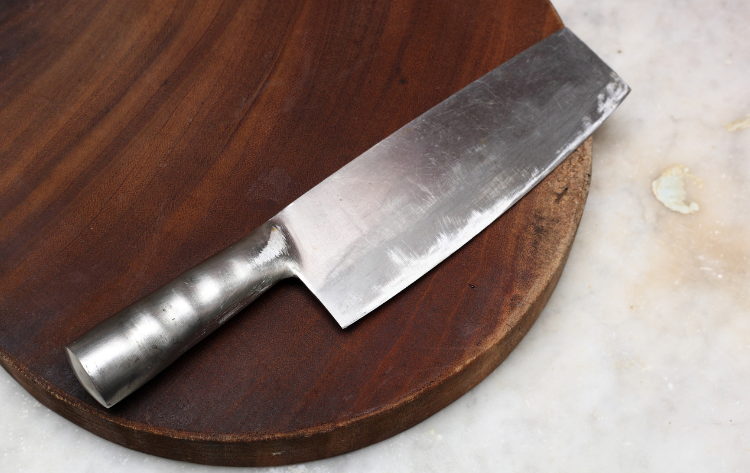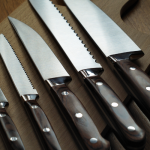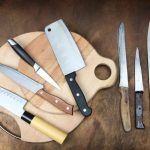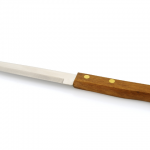A cleaver, also known as a Chinese knife, is a large, versatile kitchen knife commonly used in various Asian cuisines. Its design and features make it suitable for a range of culinary tasks, from chopping vegetables to slicing meat. Let’s explore the key features and aspects of the cleaver:
Blade Size and Shape:
Cleavers typically have a rectangular blade that is considerably larger and heavier than standard kitchen knives. This shape is ideal for chopping through thick materials like meat and bone.
Edge:
The blade of a cleaver is usually less sharp than that of other knives. This is because it relies more on the weight of the blade to cut through ingredients, rather than a razor-sharp edge.
Material:
Cleavers are often made from carbon steel, stainless steel, or a combination of both. Carbon steel blades are known for their sharpness and edge retention but can rust if not properly cared for. Stainless steel blades are more resistant to corrosion and are easier to maintain.
Handle:
The handle of a cleaver is designed for a firm grip, often made from wood, plastic, or composite materials. The ergonomic design ensures stability and control during heavy chopping tasks.
Versatility:
Cleavers are not only used for chopping meat but also for crushing garlic, slicing vegetables, and even scooping ingredients off the cutting board due to their wide blade.
Weight and Balance:
The weight distribution in a cleaver is important for effective use. A well-balanced cleaver reduces the effort needed in chopping and helps in making precise cuts.
Maintenance:
Regular sharpening and proper storage are essential for maintaining a cleaver. It’s also important to clean and dry it thoroughly after each use to prevent corrosion, especially for carbon steel blades.
Cultural Significance:
In many Asian cultures, the cleaver is a staple in the kitchen. It’s a symbol of the culinary heritage and is often used in both professional and home cooking.
Types:
There are various types of cleavers, each designed for specific tasks. Some are heavier and used for chopping bones, while others are lighter and more suited for vegetables and boneless meat.
Safety:
Due to their size and weight, using a cleaver safely is crucial. Proper technique and awareness of the blade’s position are important to prevent accidents.
The cleaver’s design makes it a unique and valuable tool in the kitchen, capable of handling a wide array of cooking tasks with efficiency and ease.



